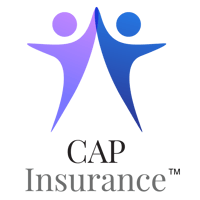Experts estimate that in the American workforce as a whole, workers will need 70 to 90 percent of their pre-retirement income to maintain their current standard of living when they stop working.
Lower income earners may need more than 90 percent. Among workers 25-64 years of age, a little more than half are participants in an employer-sponsored retirement plan.
By starting a retirement savings plan, you will help your employees save for the future, and you will help secure your own retirement. Offering a retirement plan may also help you attract and retain better qualified employees.
Tax advantages have made it more appealing than ever to establish and contribute to a retirement plan. These tax advantages may include the following, depending on the type of retirement plan selected:
- Employer contributions are deductible from the employer’s income;
- Employee contributions (other than Roth contributions) are not taxed until distributed to the employee; and
- Money in the plan grows tax-free.
This handy retirement chart will help give you some information to help you make a decision or start discussions with your broker or financial planner.
|
|
Payroll Deduction IRA |
SEP |
Simple IRA Plan |
401(k) |
403(b) |
457(b) |
Defined Benefit |
|
Key Advantage |
Easy to set up and maintain. |
Easy to set up and maintain. |
Salary reduction plan with little administrative paperwork. |
Permits high level of salary deferrals by employees. May include designated Roth program. |
Permits high level of salary deferrals by employees. May include designated Roth program. |
Permits high level of salary deferrals by employees. Governmental: May include designated Roth program. |
Provides a fixed pre-established benefit for employees. |
|
Sponsor or Eligible Employer |
Any employer |
Any employer |
Employers with 100 or fewer employees that do not currently maintain another plan |
Any non-government employer |
Public education employers 501(c)(3) organizations |
State and local governments |
Any employer |
|
Employer’s Role |
Arrange for employees to make payroll deduction contributions. Transmit contributions for employees to IRA. No annual filing requirement. |
Set up plan — employer may use Form 5305-SEP. Transmit contributions for employees to SEP-IRA. Generally, no annual filing requirement. Bank or financial institution handles most of the paperwork. |
Set up plan— employer may use Form 5304-SIMPLE or Form 5305-SIMPLE. Transmit contributions for employees to SIMPLE IRA. No annual filing requirement Bank or financial institution handles most of the paperwork. |
Arrange for employees to make elective deferral contributions and transmit contributions. Must annually file Form 5500 (unless government entity). May require annual nondiscrimination testing to ensure plan doesn’t discriminate in favor of highly compensated employees. No model form to establish this plan. |
Arrange for employees to make elective deferral contributions and transmit contributions. May require Form 5500 filing if employer contributions are made (unless government entity). No model form to establish this plan. |
Arrange for employees to make salary reduction contributions. No model form to establish this plan. |
Must annually file Form 5500 (unless government entity). An actuary must determine annual contributions. No model form to establish this plan. |
|
Plan Contributions |
Employee can decide how much to contribute. |
Employer can decide whether to make contributions year-to-year. Only employer contributes. |
Employee can decide how much to contribute. Employer must make matching contributions or contribute 2% of each eligible employee’s compensation. |
Employee elective deferral contributions. Employer contributions are permissible but not required. |
Employee elective deferral contributions. Employer contributions are permissible but not required. |
Employee elective deferral contributions. Employer contributions are permissible but not required. |
Primarily funded by employer. |
|
Maximum Annual Contribution (per participant) |
Employee: $5,500 for 2017 and 2018 |
Up to 25% of compensation, but no more than $54,000 for 2017 ($55,000 for 2018). |
Employee: $12,500 for 2017 and 2018. Employer: either match employee contributions 100% of first 3% of compensation (can be reduced to as low as 1% in any 2 of 5 years); or contribute 2% of each eligible employee’s compensation. |
Employee Elective Deferrals: $18,000 for 2017 ($18,500 for 2018). Employer & Employee: lesser of $54,000 (2017) ($55,000 for 2018) or 100% of compensation, subject to nondiscrimination testing. |
Employee Elective Deferrals: $18,000 for 2017 ($18,500 for 2018). Employer & employee: lesser of $54,000 (2017) ($55,000 for 2018) or 100% of includible compensation. Age 50 or Over - additional elective deferrals: $6,000 (2017 and 2018). |
Employer & Employee: $18,000 for 2017 ($18,500 for 2018). Governmental: Age 50 or Over — additional salary reduction contribution: $6,000 (2017 and 2018). |
Actuarially determined contribution. Plan benefits are subject to nondiscrimination testing. |
|
Catch-up Contributions |
Age 50 or over – additional employee contribution of $1,000 for 2017 and 2018. |
N/A |
Age 50 or Over — additional employee contribution: $3,000 in 2017 and 2018. |
Age 50 or Over —additional elective deferrals: $6,000 in 2017 and 2018. |
Special 403(b) Catch-up: selected employers; employee must have 15 years of service; limited to least of: 1) $3,000; 2) $15,000 less previously excluded special catch-ups; and 3) $5,000 multiplied by years of service minus previously excluded deferrals. |
Special 457 Catch-up: 3 years prior to the year of normal retirement age; limited to lesser of: 1) $36,000 (twice the basic annual limit) for 2017 $37,000 for 2018); or 2) The basic annual limit plus underutilized basic annual limit in prior years (only allowed if not utilizing the age 50 or over catch-up).
|
N/A |
|
Minimum Employee Coverage Requirement |
Should be made available to all employees. |
Must be offered to all employees who are at least 21 years of age, employed by the employer for 3 of the last 5 years, and had compensation of at least $600 for 2017 and 2018. |
Must be offered to all employees who have compensation of at least $5,000 in any prior 2 years and are reasonably expected to earn at least $5,000 in the current year. |
Must pass minimum coverage test. |
Employee Elective Deferral Contributions: all eligible employees may elect to have a contribution of more than $200 by salary reduction. Other Contributions: must pass minimum coverage test (except government entities). |
Does not need to pass a minimum coverage test. Governmental: common-law employees, independent contractors. Tax-exempt Organizations: selected group of management or highly compensated employees, independent contractors. |
Must pass minimum coverage test. |
|
Withdrawals, Loans and Distributions |
Withdrawals permitted at any time, subject to federal income taxes. Subject to 10% additional tax if before age 59½. Must start receiving distributions by April 1 of the year following attainment of age 70½ (special rule applies to Roth IRAs). Loans are not permitted from IRAs. |
Withdrawals permitted at any time subject to federal income taxes. Subject to 10% additional tax if before age 59½. Must start receiving distributions by April 1 of the year following attainment of age 70½ (special rule applies to Roth IRAs). Loans are not permitted from SEP-IRAs. |
Withdrawals permitted any time subject to federal income taxes. Subject to 10% additional tax if before age 59½ (25% if less than 2 years of participation). Must start receiving distributions by April 1 of the year following attainment of age 70½. Loans are not permitted from Simple IRA plans. |
Withdrawals permitted after a distributable event occurs (e.g., retirement, death, disability, severance from employment). Must start receiving distributions by April 1 following the later of year of retirement or attainment of age 70½. Plan may permit loans and hardship withdrawals. Early withdrawals subject to 10% additional tax. |
Withdrawals permitted after a distributable event occurs (e.g., retirement, death, disability, severance from employment). Must start receiving distributions by April 1 following the later of year of retirement or attainment of age 70½. Plan may permit loans and hardship withdrawals. Early withdrawals subject to 10% additional tax. |
Withdrawals permitted after severance from employment. Must start receiving distributions by April 1 following the later of year of retirement or attainment of age 70½. Governmental: plan may permit loans/distribution for unforeseen emergency or small inactive accounts. Tax-exempt Organizations: plan may not permit loans; special rules apply to independent contractors. |
Payment of benefits after a distributable event occurs (e.g., retirement, death, disability, severance from employment). Must start receiving distributions by April 1 following the later of year of retirement or attainment of age 70½. Loans permitted. Early withdrawals subject to 10% additional tax. |
|
Rollovers and Transfers |
Rollovers permitted from IRA to another and to an eligible retirement plan (special rules apply to Roth IRAs). |
Rollovers permitted from IRA to another and to an eligible retirement plan. |
Rollovers permitted from one SIMPLE IRA to another SIMPLE IRA any time. However, a rollover from a SIMPLE IRA to a non-SIMPLE IRA or to an eligible retirement plan can be made tax-free only after a two-year participation in the SIMPLE IRA plan. |
Rollovers permitted to an eligible retirement plan or IRA. |
Rollovers permitted to an eligible retirement plan. Transfers permitted from one 403(b) to another 403(b). Purchase permissive service (government plans). |
Governmental: Rollovers permitted to an eligible retirement plan. Transfers permitted from one government 457(b) to another government 457(b). Purchase permissive service. Tax-exempt Organizations: No rollovers permitted. Post-severance transfers permitted from one tax-exempt 457(b) to another tax-exempt 457(b). |
Generally, participant’s benefit can be rolled over to another qualified plan that accepts rollovers or an IRA. |
|
Vesting |
Contributions are immediately 100% vested. |
Contributions are immediately 100% vested. |
Employer and employee contributions are immediately 100% vested. |
Employee elective deferral contributions are immediately 100% vested. Employer contributions may vest over time according to plan terms. |
Employee elective deferral contributions are immediately 100% vested. Employer contributions may, in limited circumstances, vest over time according to plan terms. |
Governmental: Employee salary reduction contributions are immediately 100% vested. Employer contributions may vest over time according to plan terms. Tax-exempt Organizations: Employee and employer contributions must be subject to claims of creditors. |
May vest over time according to plan terms. |
|
Employee Plans Resolution Compliance System (EPCRS) |
No |
Yes |
Yes |
Yes |
Yes |
No Governmental: special 180-day rule to correct; submission accepted on a provisional basis outside EPCRS. |
Yes |
This overview is not intended to cover every possible retirement option. Nor is it to be construed as any specific advice on what you should do. The information provided is informational and you seek legal or professional advice before choosing on embarking on any retirement options.
Source: Internal Revenue Service Publication 4484
Today, employers have more options and more complicated scenarios around the issue of retirement plans than ever before. Questions like:
- What are the best tax advantages for your business?
- Which plans give me the most flexibility if we need to change them?
- Which plans affect the business financially more than others?
- Will my employees have options to choose several retirement plans ?
Unless you are a certified financial planner or certified insurance broker, you'll need help in determining the best option for and your employees. Contact your broker or financial planner before choosing anything. The effects of the wrong chose could affect greatly.
“Statements on this website as to policies and coverage's and other content provide general information only and we provide no warranty as to their accuracy. Clients should consult with their licensed agent as to how these coverage's pertain to their individual situation. Any hypertext links to other sites or vendors are provided as a convenience only. We have no control over those sites or vendors and cannot, therefore, endorse nor guarantee the accuracy of any information provided by those sites or the services provided by those vendors.”



